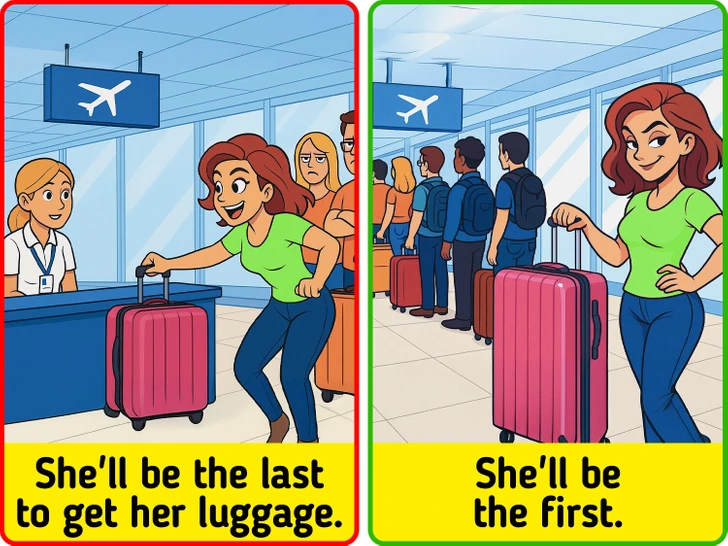Traveling can be one of the most rewarding experiences in life, filled with excitement, discovery, and unforgettable moments. However, there’s no denying that it also comes with its share of stress—especially when it involves airports. From long check-in lines to the anxiety of waiting at baggage claim, the process can wear on even the most seasoned traveler. Luckily, airport insiders have a few tricks up their sleeves to make the experience smoother, faster, and far more enjoyable. If you’re tired of wasting precious time in queues and waiting endlessly for your luggage, the following tips can help you turn that hectic airport visit into a more streamlined part of your journey.

Let’s start with one of the most underrated strategies: follow the principle of “last in, first out.” It might feel instinctual to rush to the check-in counter the moment your airline opens for boarding. After all, being early often seems like the responsible thing to do. But when it comes to checked luggage, this tactic may actually work against you. Most people don’t realize that airport staff typically load baggage carts from front to back. These carts are then rolled directly into the cargo hold of the plane in the same order they were loaded. As a result, bags that were checked in early usually end up at the front of the cargo hold and are among the last to be removed upon arrival. That means more time spent standing around the baggage carousel, waiting.
So what’s the solution? Consider checking in closer to the end of the boarding process. While you don’t want to cut it so close that you risk missing your flight, arriving toward the tail end of check-in increases the odds that your bag will be loaded last, and therefore come out first on the luggage belt when you reach your destination. It’s a simple shift in timing that could shave several minutes off your post-flight wait.
Another practical strategy is to avoid checking in large, bulky suitcases unless absolutely necessary. Some airlines sort and transport larger items differently from standard luggage, meaning your oversized suitcase could end up being loaded separately—and unloaded last. That’s especially true when a plane is filled to capacity or dealing with weather delays. If you can pack lighter and stick to a standard-sized suitcase, you’ll likely find that your luggage makes it onto the belt much faster. Plus, traveling light means less physical strain and greater mobility, whether you’re hopping on a shuttle or catching a connecting flight.
Still need to check a bag? Here’s a little-known tip that could work in your favor: attach a “Fragile” sticker to your luggage. While many travelers assume these labels are only for breakable items like wine bottles or electronics, they can serve a hidden purpose even for regular suitcases. When baggage handlers see a “Fragile” label, they often place those bags on top of other luggage or load them into a separate section of the cargo hold to prevent damage. This typically results in those bags being among the first removed once the plane lands. It’s a subtle but effective trick that could save you time without costing a dime.

Aside from baggage tricks, comfort on the plane itself can dramatically affect how you feel during and after your flight. That’s why flight attendants, who spend thousands of hours in the air each year, have compiled their own set of tips to boost passenger comfort. For instance, seasoned crew members suggest dressing in layers, even in the summer. Cabin temperatures can fluctuate, and having the ability to add or remove clothing as needed makes a big difference. Soft, breathable fabrics are best, and items like scarves or light jackets can double as makeshift pillows or blankets in a pinch.
Speaking of comfort, hydration is key. The air inside airplane cabins is notoriously dry, and dehydration can sneak up on you, causing fatigue, headaches, or general discomfort. Bring a reusable water bottle and fill it up after clearing security. You’ll thank yourself mid-flight when you’re feeling refreshed rather than drained. Don’t rely solely on the small cups of water handed out during beverage service—they’re rarely enough.
Another expert tip: noise-canceling headphones or quality earplugs can be a game-changer, especially on long-haul flights. Whether it’s the drone of the engines, a crying baby, or constant cabin announcements, background noise can make it hard to relax or sleep. Blocking it out helps you arrive more rested and less irritable.
And let’s not forget the importance of seat selection. If you value legroom or want quicker access off the plane, paying a little extra for an aisle seat or one closer to the front can be well worth it. On the other hand, if you’re a light sleeper or want to avoid being disturbed, a window seat might be a better fit.

Planning ahead with small but smart choices—like checking in later, labeling your bag, packing light, and following flight attendant tips—can drastically improve your travel experience. These may seem like minor adjustments, but collectively they add up to a smoother, more enjoyable journey. The less time you spend waiting and feeling uncomfortable, the more you can focus on what really matters: the adventure that awaits you on the other side.
So next time you’re heading to the airport, remember that how you prepare can influence not just the flight itself, but your entire travel experience. Use these insider strategies to spend less time in lines and more time savoring the joy of travel. Because in the end, it’s not just about getting from point A to point B—it’s about enjoying every moment in between.





